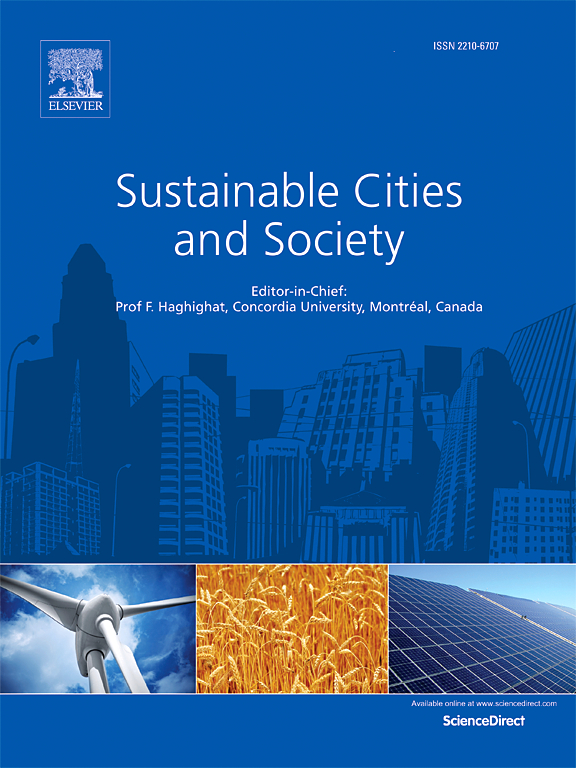Mitigating urban heat island effects through leadership in energy and environmental design evaluation and blue-green infrastructure: Applying the hazard capacity factor design model for urban thermal resilience
IF 10.5
1区 工程技术
Q1 CONSTRUCTION & BUILDING TECHNOLOGY
引用次数: 0
Abstract
This study aimed to evaluate urban heat island (UHI) mitigation strategies by applying the Hazard Capacity Factor Design (HCFD) model, which was initially developed for urban flooding, to assess the effectiveness of blue-green infrastructure in enhancing urban resilience to extreme heat. UHIs exacerbate the impacts of climate change, particularly in densely populated areas with limited green spaces. This study utilized computational fluid dynamics (CFD) simulations along with sensor data from Seongdong-gu, Seoul, to evaluate climate adaptation strategies, including cooling fog and green infrastructure, both individually and in combination. The results indicate that the HCFD model can effectively assess urban thermal resilience, with R² values exceeding 0.9 for all monitoring points. The combination of cooling fog and green infrastructure showed significant interaction effects, with a conservative interaction effect of approximately 3.97°C cooling at a wind speed of 1 m/s. These findings underscore the potential of the HCFD model to inform data-driven urban planning and improve climate adaptation strategies, thereby contributing to the development of resilient urban environments. Future research should explore the broader applicability of the HCFD model to other urban climate risks and assess the long-term impacts of integrated adaptation measures.
求助全文
约1分钟内获得全文
求助全文
来源期刊

Sustainable Cities and Society
Social Sciences-Geography, Planning and Development
CiteScore
22.00
自引率
13.70%
发文量
810
审稿时长
27 days
期刊介绍:
Sustainable Cities and Society (SCS) is an international journal that focuses on fundamental and applied research to promote environmentally sustainable and socially resilient cities. The journal welcomes cross-cutting, multi-disciplinary research in various areas, including:
1. Smart cities and resilient environments;
2. Alternative/clean energy sources, energy distribution, distributed energy generation, and energy demand reduction/management;
3. Monitoring and improving air quality in built environment and cities (e.g., healthy built environment and air quality management);
4. Energy efficient, low/zero carbon, and green buildings/communities;
5. Climate change mitigation and adaptation in urban environments;
6. Green infrastructure and BMPs;
7. Environmental Footprint accounting and management;
8. Urban agriculture and forestry;
9. ICT, smart grid and intelligent infrastructure;
10. Urban design/planning, regulations, legislation, certification, economics, and policy;
11. Social aspects, impacts and resiliency of cities;
12. Behavior monitoring, analysis and change within urban communities;
13. Health monitoring and improvement;
14. Nexus issues related to sustainable cities and societies;
15. Smart city governance;
16. Decision Support Systems for trade-off and uncertainty analysis for improved management of cities and society;
17. Big data, machine learning, and artificial intelligence applications and case studies;
18. Critical infrastructure protection, including security, privacy, forensics, and reliability issues of cyber-physical systems.
19. Water footprint reduction and urban water distribution, harvesting, treatment, reuse and management;
20. Waste reduction and recycling;
21. Wastewater collection, treatment and recycling;
22. Smart, clean and healthy transportation systems and infrastructure;
 求助内容:
求助内容: 应助结果提醒方式:
应助结果提醒方式:


